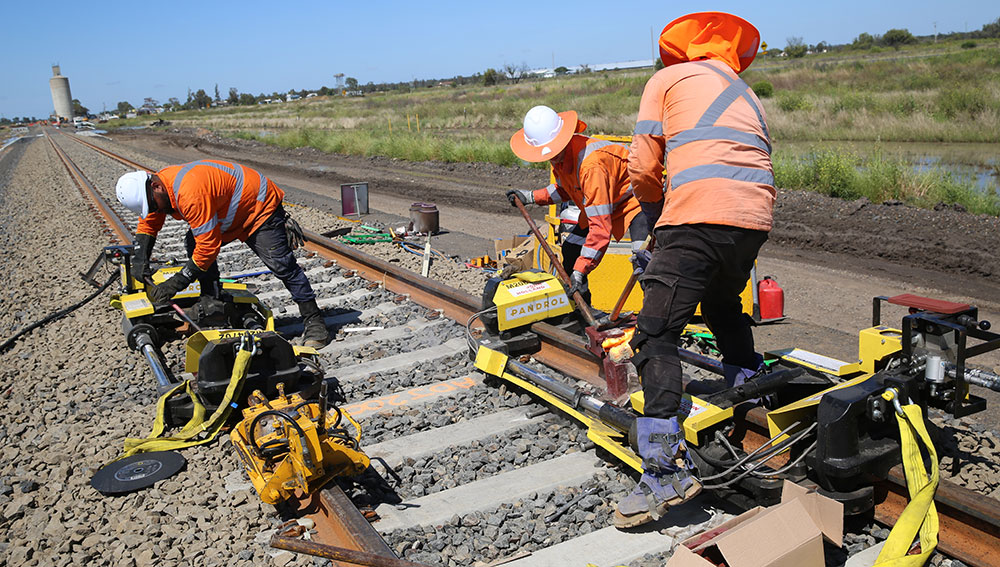Rail destressing 101
Destressing is the process of conditioning the steel rail so it can cope better with temperature extremes. It is one of the final steps performed by crews to prepare the rail for operation.
June 28, 2022

The optimum, or stress free, temperature for steel rail is 38 degrees Celsius (C). When it gets too hot or too cold the rail becomes stressed. Too much heat causes the rail to expand, buckle and move out of alignment. When the rail gets too cold it contracts and this can cause it to snap.
Rail destressing must be performed when the rail’s temperature is at or below 38C – so the work is very weather dependent.
A small piece of the rail is cut out of the middle of a section up to 2km long and the two lengths are pulled and stretched towards each other by a machine called a tensor. When they reach the target stretch point the two pieces are welded together.
The welding that is performed to attach the two pieces of rail is no ordinary welding! Called thermit welding, the process involves placing a sand mould on the steel rails before thermite (a hot mix of metal powder and metal oxide) is poured into the mould.
Reaching temperatures of 600 degrees, the thermite transforms into molten steel and slag and fuses the two pieces of rail together. After approximately five minutes, the sand mould is then dismantled leaving the weld which is then grinded to leave a smooth track.
TOP IMAGE: Tensors pulling rails towards each other with one section (on right) being welded together using thermit welding

BOTTOM IMAGE: Thermit welding kiln heating up the thermite before it is emptied into the space between the rails to fuse the two pieces together

